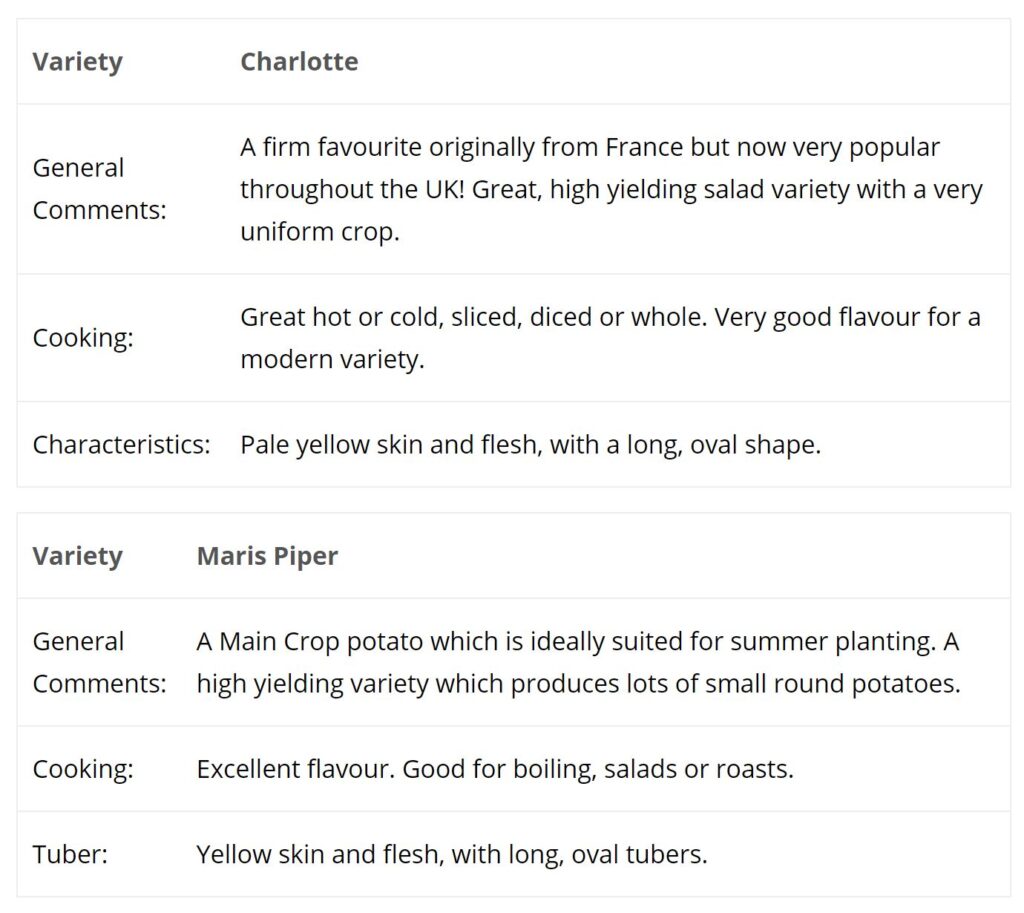Late Planting or Christmas potatoes as they are commonly known are planted late-June or July to produce that “new potato” taste late in the season (They can be an enjoyable addition to the traditional Christmas dinner: a bowl of delicious, steaming baby potatoes garnished with parsley).
The key to growing these out-of-season new potatoes is to obtain specially produced and stored classified seed potatoes. Locate an area of ground in your garden or a few large containers for your patio and follow the simple growing instructions below.
The seed potatoes grow very quickly when they are buried in the warm summer soil, producing good numbers of uniformly shaped potatoes, as the days shorten into autumn. The varieties of seed potatoes suitable for second cropping are specially selected by our technical team – see list below.
These government classified seed potatoes, which are grown on specialist farms are harvested during September/October. They are kept in our cool temperature controlled stores until June the following year when they are graded and packed ready for sale.
Although second cropping is easy, a little extra care and attention is required. Please see our Growing Guide below for further details.

Second Cropping (Christmas) Potatoes (June / July planting)
The seed tubers coming from us are in store in the warm summer air will start to grow and respire and may feel quite moist, so it is desirable to plant them as soon as possible for best results.
Containers are a good choice if you do not have enough space, with the added advantage that you can start them off outside and finish in the greenhouse when there is space.
Keep up to date with our latest news, offers and tips for gardening.